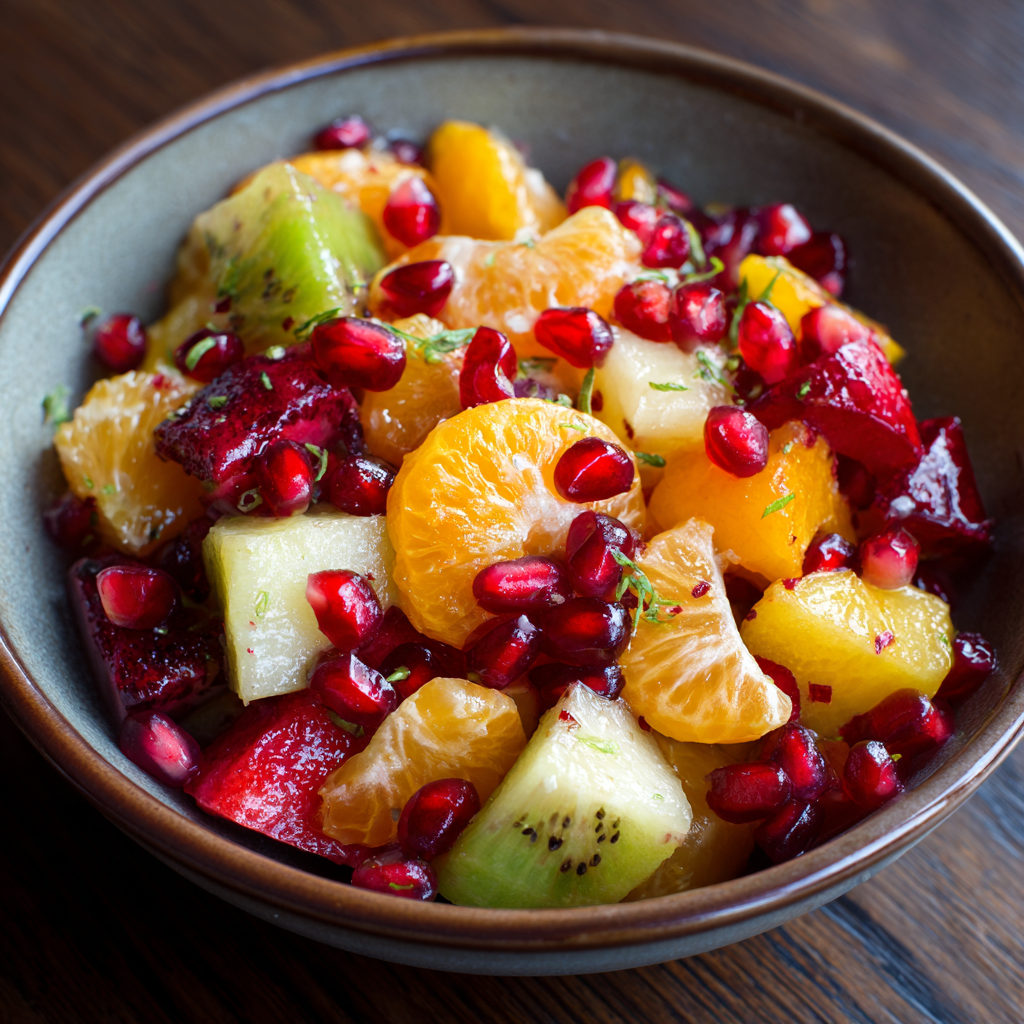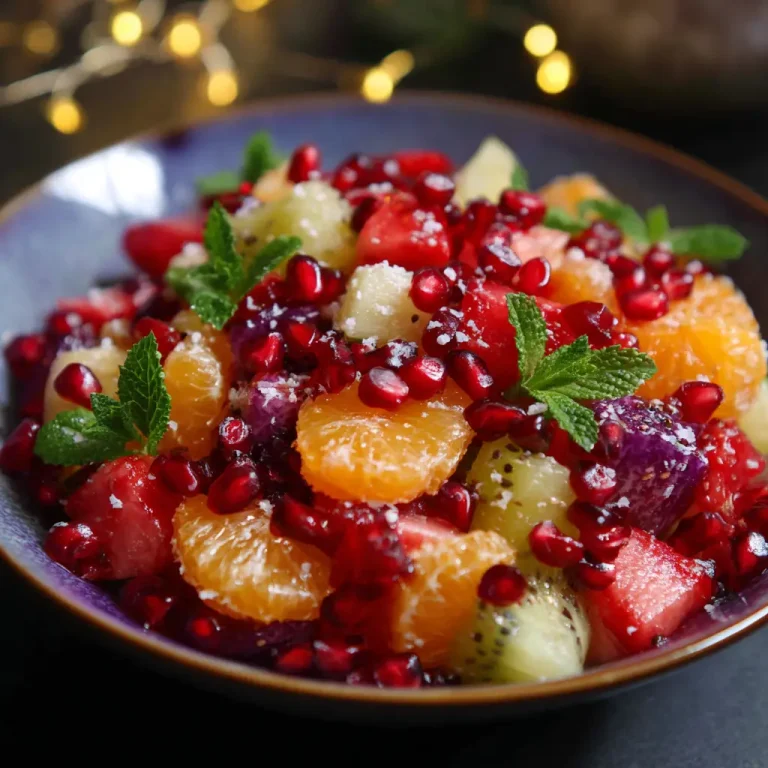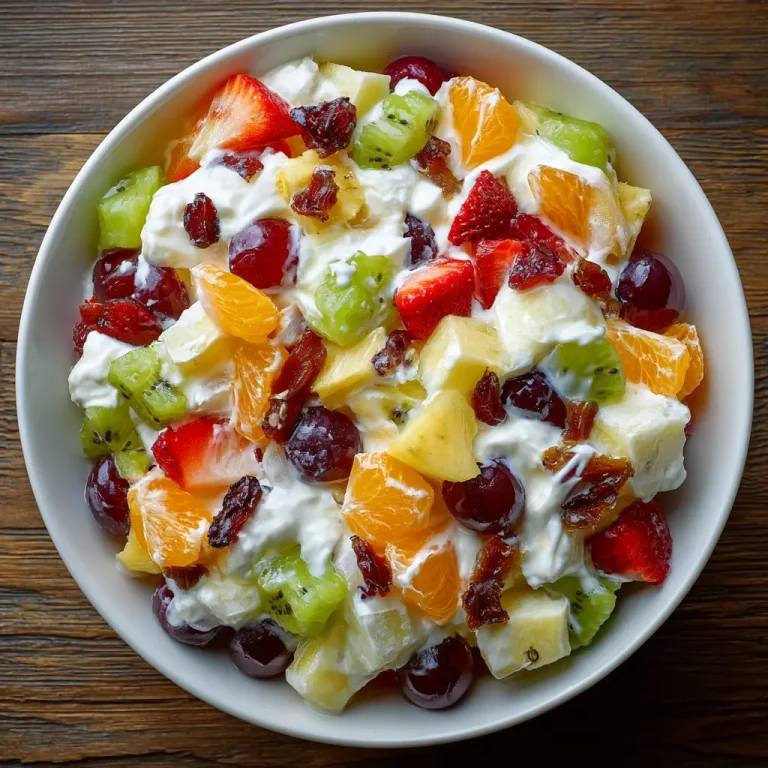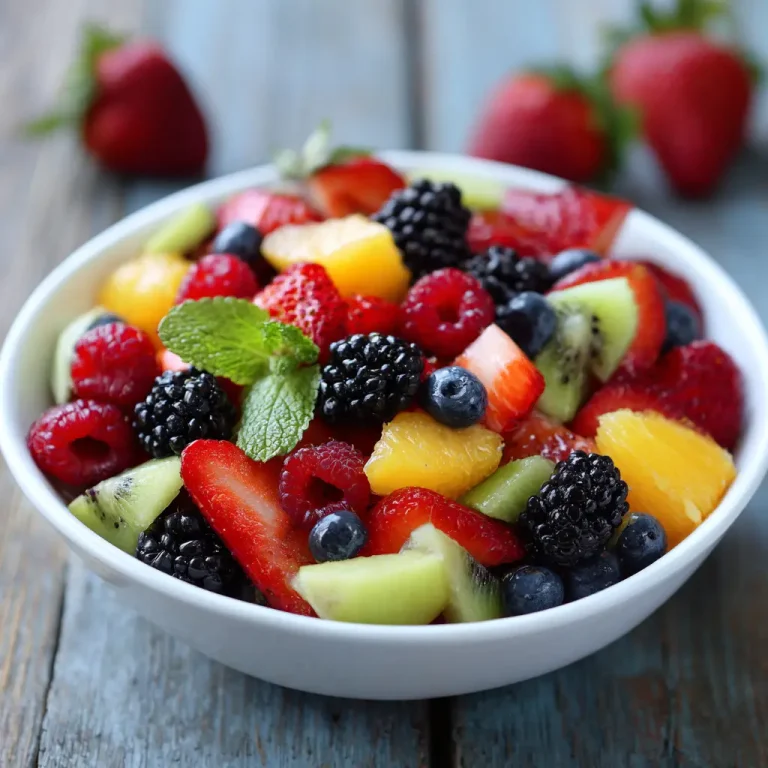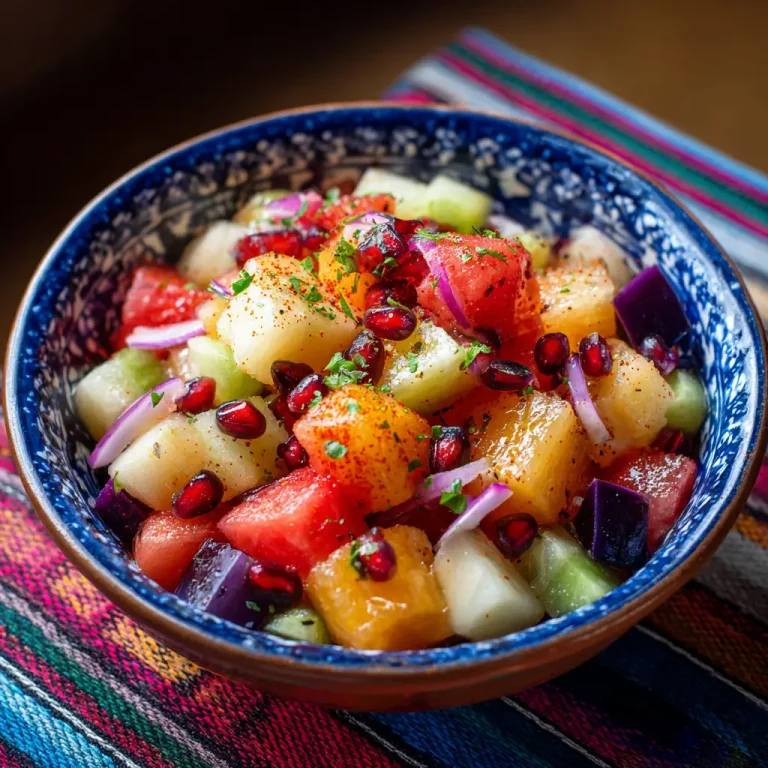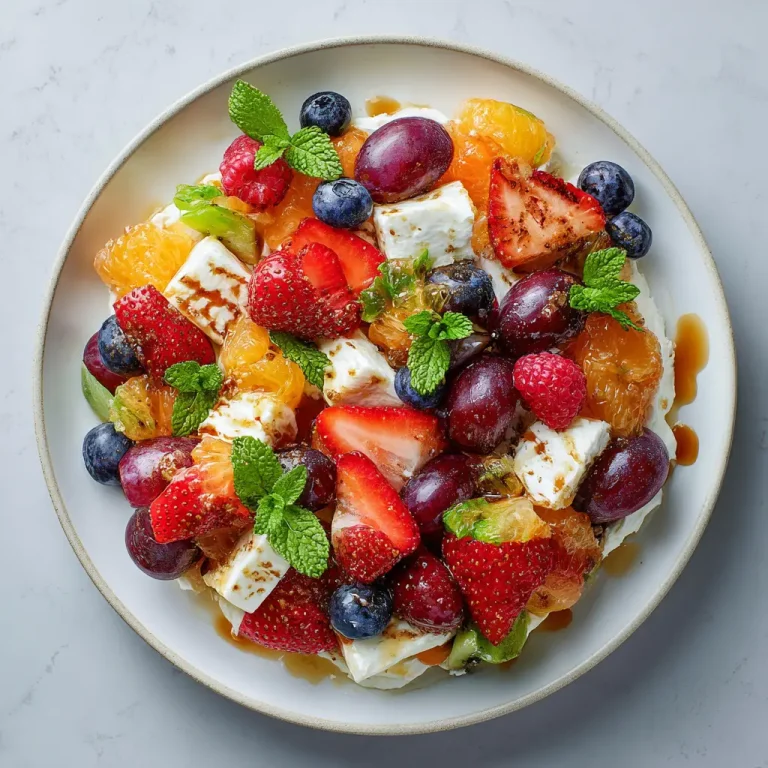Introduction
Fall brings with it a comforting mix of crisp air, golden leaves, and a harvest full of seasonal produce. Among the many treats that shine during this time, a fall fruit salad captures the essence of the season in the simplest way. A bowl of freshly cut apples, pears, grapes, and pomegranate seeds brings more than just flavor; it adds color, texture, and nourishment to the table. This dish does not require heavy preparation, yet it carries the kind of warmth that makes gatherings special. Families often look for recipes that balance health with taste, and a fall fruit salad fits perfectly into that search. It feels indulgent while remaining light, and the sweet notes of fruit combine beautifully with the crunch of nuts or the creaminess of yogurt dressing. The recipe can be adjusted to suit personal preferences, which makes it both versatile and timeless. A thoughtfully prepared fruit salad not only satisfies hunger but also creates a lasting impression as part of any meal.
Ingredients Needed

The strength of a fruit salad lies in the quality of the produce. Choosing ripe but firm fruit ensures that the salad holds its shape and freshness. The following table outlines the main ingredients with approximate calorie values so you can plan your serving size with awareness.
| Ingredient | Quantity | Calories (approx) |
|---|---|---|
| Apples | 2 medium | 190 |
| Pears | 2 medium | 200 |
| Red or green grapes | 1 cup | 60 |
| Pomegranate seeds | 1 cup | 145 |
| Mandarin oranges | 2 small | 80 |
| Dried cranberries | ¼ cup | 90 |
| Walnuts or pecans | ½ cup | 200 |
| Honey | 2 tablespoons | 120 |
| Fresh lemon juice | 1 tablespoon | 4 |
| Cinnamon powder | ½ teaspoon | 3 |
This mix provides a balance of sweetness, tartness, crunch, and warmth. You can scale the amounts up or down based on the number of servings required.
Step-by-Step Cooking Instructions
Start by washing all the fruit under cold water to remove any dirt or residue. Use a clean cloth to pat everything dry before chopping. Cut the apples and pears into small cubes, leaving the skins on for added fiber and color. Slice the grapes into halves to make them easier to eat and to allow their juices to blend with other flavors. Separate the pomegranate seeds carefully so they stay intact. Peel the mandarins, then divide them into segments and remove any seeds. Place all these fruits in a large mixing bowl.
Next, sprinkle in the dried cranberries. Their chewy texture contrasts nicely with the crisp fruit. Add the walnuts or pecans for richness and crunch. In a small separate bowl, whisk together the honey, lemon juice, and cinnamon powder until the mixture forms a light dressing. Pour this dressing over the fruit and gently toss everything together with a wide spoon. Take care not to crush the softer fruits. Once mixed, let the salad sit in the refrigerator for about fifteen minutes before serving so the flavors meld beautifully.
Tips for Customizing the Recipe
The beauty of a fall fruit salad lies in how easily it adapts to personal taste. Some people prefer a creamy texture, which can be achieved by stirring in a few spoonfuls of Greek yogurt or a light cream cheese blend. Others may enjoy an extra kick of spice, so adding a pinch of nutmeg or ginger can deepen the autumn flavor. If you want the salad to feel more festive, drizzle a small amount of maple syrup in place of honey for a richer sweetness. Fresh herbs like mint or basil add a refreshing note that pairs surprisingly well with the earthy taste of nuts. For a lighter option, omit the dried cranberries and nuts, focusing solely on fresh fruits. Customizing this dish allows you to create a version that feels uniquely yours while still honoring the spirit of the season.
Nutritional Information
A single serving of this fall fruit salad averages around 250 to 300 calories depending on portion size and additions. The apples and pears bring valuable dietary fiber that supports digestion. Grapes and pomegranate seeds add antioxidants that contribute to heart health. Nuts provide protein and healthy fats that keep you satisfied for longer periods. Honey supplies natural sweetness along with small amounts of minerals. Lemon juice enhances vitamin C intake, and cinnamon contributes subtle anti-inflammatory properties. Overall, the salad is nutrient dense yet light enough to be enjoyed as a side dish, snack, or even breakfast. It makes a wholesome choice for anyone aiming to eat clean while still enjoying food that feels indulgent.
Serving Suggestions
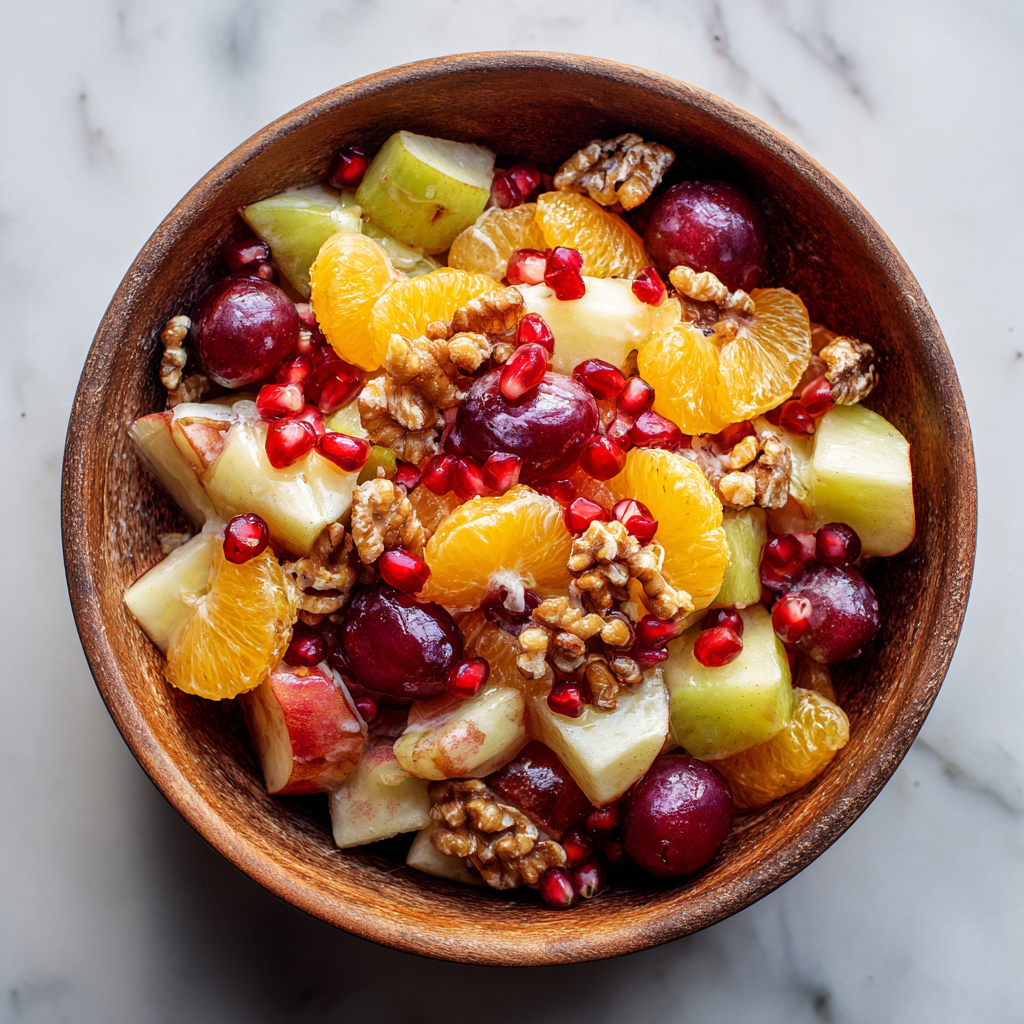
A fall fruit salad fits beautifully into many occasions. It works as a vibrant starter at family dinners, offering a refreshing beginning before heavier main courses. For brunch gatherings, pair it with baked goods like muffins or croissants. During holiday meals, serve it alongside roasted dishes to balance out the richness of meats and gravies. The salad can also be layered into mason jars for easy grab-and-go snacks throughout the week. Topping it with granola transforms it into a light yet filling breakfast. For a touch of elegance, serve in clear glass bowls or parfait glasses to showcase the colors of the season. Whether eaten alone or paired with other dishes, the salad always feels inviting.
Conclusion
Every season has its signature foods, and fall is known for produce that combines sweetness with warmth. A fruit salad that highlights these flavors does more than fill a plate; it tells the story of the season. Preparing this dish takes little effort, yet the result feels abundant and celebratory. It reminds us that healthy food can be enjoyable, versatile, and full of character. Adding small personal touches makes the recipe even more meaningful and ensures that it never grows old. Whether you serve it to guests at a holiday table or prepare a bowl for yourself on a quiet evening, a fall fruit salad carries the comfort of autumn with every bite.

